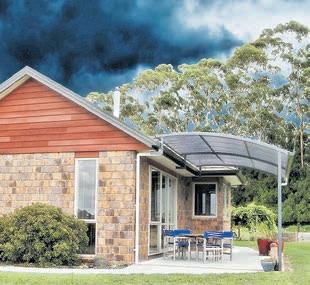















“I come from Taranaki, and I adore it there, too, but the temperature in the north is unbeatable,” says organiser Janine Sims.

“I joined the centre when my daughter Amelia was one year old, and she is now in primary school.”
“Bailey, my youngest daughter, is attending there now, too. It is an amazing community asset. When I joined, there were seven families, and we now have more than 20.
“My husband, Ian, is from Waipu, but I am not, so being a Playcentre member has been a great way to get to know other mums and dads in the area. We have events and all the whānau, so I get to know extended families too. Now, when I am at primary school with my Amelia, it feels like I know half the school already. I have met so many people through the centre, which is great.

“Ian went to the centre, and it has been there for a while, and it has seen many generations go through it. For us, it is second generation.”
The clothing is for ages nought to six years old and donations are open until Saturday. It costs $10 to fill a bag.
“I am grateful for the generous donations from the community. Some






mothers have said it has been a great initiative because local opportunity shops are not taking clothes post-Covid. Clothing can become a non-sustainable issue, and this fundraiser is a great way to recycle clothing.
“Anything we find with rips or stains will go onto the free table, and that is great for messy play. We pull out the high-quality clothes and sell them for a separate price.”
Janine said the funds will go towards sustainable projects and updating items at the centre for when the site is hired.

“We are doing a bike track extension this year and are developing and finishing that, and we also have a river walk project.

“It is awesome to start at a younger level and the children get the appreciation for it also.

“I love the rural community vibe and living close to the beach. There is a rich, supportive culture in Waipu and everyone works collaboratively to empower and create momentum in the neighbourhood.
“I adore that because it reminds me of my parents, who were always very active in local groups and events.” ¢


“Growing up, I was one of six children living in a traditional family. Dad went to work and mum stayed at home with us.


“She sewed most of our clothes. I would go to the store with her, and she let me choose the fabrics and styles, so I was always interested in women’s fashion. I watched how she did it and followed, but she was quite ad-hoc.
“It was harder to learn, but I absorbed it, and with her creative side, I learned how to adapt patterns and not be restricted by them.
“My mum got a new sewing machine in the early 80s, and that was the machine I learned to sew on, and she gave me it — I treasure it.”
During intermediate and high school, Vivienne started a more structured sewing class and began creating garments. She says she enjoys that the items are unique.
“I loved it and eventually studied it at the Manukau Institute of Technology. It was in-depth, and I learned about how clothes are made and how to design patterns. I got to meet people, share ideas, and be pushed to do more challenging creations. Creating clothes gives me a great feeling of accomplishment. My styles always change, and at the moment, I am making elastic waist skirts, loose-fitting tops and comfortable items.
“I prefer working with cotton and linen fabrics, which are, currently, what I have been working with mostly. They are easier to sew with and comfortable to wear, breathable, soft on the skin, and last well.
“Seven years ago, I moved to One Tree Point for a better life-work balance at the Ruakākā-based maternity activewear brand Cadenshae. I began working part-time recently and saw it as an opportunity to give back to the community with my skills, so I decided to start some sewing classes.



“I enjoy sharing my skill and helping someone on their journey and making life easier for them.


“I can show them easier sewing methods. Recently, I have been tutoring a student who is competing in the Bernina Northland Fashion Awards 2023. She is creative and wanted help with tricky materials and designs.
“It has been rewarding showing her techniques, and she made an amazing Elizabethan outfit inspired by her love for history.”
Contact Vivienne on 022 657 4294 to express your interest in the tutorials. The beginner class is from 10am–noon and teaches people how to use a sewing machine. The intermediate class is from 1pm–3pm and covers technique and construction methods. ¢
 u by Ann van Engelen
u by Ann van Engelen

The popular Mangawhai Rotary Learn to Sail programme is set to kick off for its third season on Wednesday, October 11, at 3.30pm, and all parents are most welcome to attend with their children.
“We began three years ago,” says Mangawhai Rotary Club member Grahame Carbery.
“I came up with the idea to teach children to sail when I looked out my window in Mangawhai one day and thought, children in sailboats are missing on the estuary,” says Grahame.
“I took the idea to the Rotary Club, and we decided to get some boats of our own and offer lessons by starting the Mangawhai Satellite Rotary Club.”
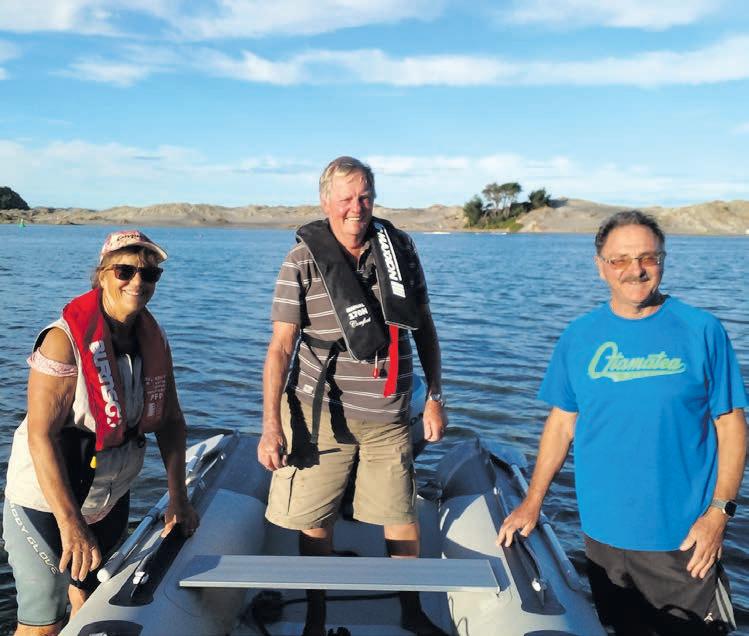
Grahame began sailing at nine years old, and later ended up one of New Zealand’s powerboat champions.
“I went to school in Auckland with a guy called Bill Townsend. Bill’s brother Des was a boat builder in Panmure. We ended up working for him after school, removing the staples from his coal moulded boats.
Spring Flower Show 27th & 28th October 2023


“He made all types of sailing boats, including the Zephyr, which is one of New Zealand’s most popular single-person sailing yachts suitable for sailors from their early teens to late 70s.
“Des was a designer making boats for the Tamaki and Kohimarama yacht clubs. Their dad built a P Class racing dinghy for Bill, and my dad brought me one as well, and we started sailing at Kohimarama together.
“We weren’t taught to sail like the children we are teaching in Mangawhai. We just hopped in our boats and taught ourselves through trial and error. Here at Mangawhai, we have a 15-member teaching team now and a total of 24 sailing boats, of which 15 are Opti training boats.”
Nine children from the age of 10 up to 14 are the initiatives new sailors to begin with.
“We also run picnic days during summer on Sundays twice a month when parents and children we have





taught over the last two seasons to come and sail the other bigger boats.
“A total of approximately 60 children have gone through our sailing programme over the last two seasons taught by our four very experienced tutors. We are very proud of what we have achieved.
“We would love you to have community members with children come down to the bottom of North Ave on Wednesday, October 11, to see our first-of-theseason sailing group and follow us at times through our teaching programme
until March next year. We start at 3.30pm after school each Wednesday. Our sailing idea has gone viral, and they say we are the first Rotary Club in the world to do such a thing.
“Our junior sailors work for a proficiency certificate, and we have three main cups to give out.”
For more information, go to the Mangawhai Rotary Learn To Sail Project or Rotary Satellite Club Of Maungaturoto — Mangawhai Facebook pages or email the sailing team directly at mangawhai. sailing@gmail.com. ¢
Public Viewing Hours 12 noon - 4pm Friday 27th October 2023 9am - 2pm
Saturday 28th October 2023
Plant Stall, Produce, Raffles, Crafts & Refreshments
Admission $2 per person, Children Free NO EFTPOS AVAILABLE.



The Bream Bay Combined Arts Group is home to many local artists who share their skills and love for a variety of art forms and is currently preparing for its annual one-day Labour Weekend Art Exhibition.

“The group has had a great year with artists getting together, learning and creating some beautiful works of art,” says organiser Colin Coutts.
“They come along to the weekly gettogethers and display their work as well as pass on their creative skills, ask each other questions and find solutions to things they may be unsure of. Our membership has had steady growth, with people enjoying being able to try different forms of art.
“Pottery is one of our strongest sectors, and we have a good range of photographers, fibre artists and painters, too. On the whole, the group is turning out some very clever work.
“‘We have lots of fun together while expanding our range of art and discussing the issues of the world and everyday life.
“The group has been going for four years now, and we are very proud of what we have been able to achieve, and there is always a happy atmosphere. I enjoy seeing people helping each other, making new friends and having a break from their day-to-day activities.
“At present, we’re in the process of putting together our annual exhibition at the clubrooms on Sunday, October 22, from 10am to 3.30pm. This will include a
good variety of the club members’ work, which will be on sale.”
The exhibition will be held at The Art Cottage, Lake Side Park Road, which turns off at 458 Marsden Point Road. Eftpos is available at the exhibition.
“There will be a varied range of art on display, which will include pieces of some very beautiful pottery, fibre, both wet and needle felting, painting and photography. All of the works of art have been produced by the group’s
45 members, and are of a very high standard. I believe both the variety and quality of work on display will arguably be some of the best to be found north of Auckland.”




Colin says the Bream Bay Combined Arts Group Inc meets on various days of the week, and newcomers are welcome, whether experienced or beginners.

“Members of the community not only exchange ideas, but they often improve







their range of artist skills with the help of other members.
“We are very excited for our upcoming exhibition and would love to see members of the community pop in and see what we do.”
For more information, to suggest an idea for a new art or craft, or to join one of the existing sessions, go to the Bream Bay Combined Arts Group Inc Facebook page or contact the secretary at bbcombinedartsgroup@gmail.com. ¢
With the endless wet summer ravaging most of the nation earlier in the year, something else crawled its way into gardens and turned vegetable crops into shredded non-existence.
Fall armyworm (FAW) is the most recent of these invasive species currently decimating crops in the North Island. It’s a caterpillar, the larval stage of the moth Spodoptera frugiperda, a small brown moth active at night when it lays its eggs in the soil. As soon as the caterpillars emerge from the soil en mass, they will chew down seedlings and young plants, leaving nothing but the stalk bases and little else.
FAW caterpillars grow up to 40mm in length and vary in colour, including light grey, black and pinky-brown. Like the parent moth, armyworm caterpillars are nocturnal and feed only at night, which makes controlling them difficult. After night, the crawling pests make their way back into the soil. They will emerge in significant numbers if there has been a lot of rain and warmth combined — resulting in destroyed gardens and forage crops.
Prevention is the first port of call, so to speak. The adult moths lay eggs at night. Use cloches covered with insectproof micro-netting above the height of the plants. Ensure no part of the netting
touches the leaves; otherwise, the moth can lay its eggs. Another option is to go out at night with a torch and gather up and destroy as many caterpillars as possible.
That is something ideal for getting children to help with and keep them occupied on a warm evening. If cloches or night culls aren’t possible, regular application of an insecticide, either artificial or organic, will be necessary. Use products specifically designed for the eradication of caterpillar larvae. Another option is to use a bacterial inoculant, Bacillus thuringiensis, which can applied as a foliar spray. It is available in New Zealand from organic suppliers. Recent reports suggest that this inoculant is the most effective control but must be applied weekly.
More information about Fall armworm is available from the Ministry of Primary Industries website mpi. govt.nz/biosecurity/exotic-pests-anddiseases-in-new-zealand/long-termbiosecurity-management-programmes/ fall-armyworm-in-new-zealand.



 u by Amy Fifita
u by Amy Fifita


Business partners Chris Bright and Lola Korewha have transformed the former Junction Restaurant and Bar into a western-themed local hub called The Saloon.

“My wife Yvonne and I moved to Wellsford 10 years ago, and we love the locals,” co-owner Chris Bright said. “They are super friendly and helpful, and we don’t see ourselves moving — it is an incredible place.
“I love country music. We and some friends always go up north to the Bay of Islands Country Festival. I like all sorts of music — kiwi, rock and country and western. We will play country and western music for people and have some bands from that genre interested in playing.
“I have played bass in various bands across the years, and I know that musicians constantly try to find great venues. I am bound to get up on stage at my bar to play at some point. I taught my sons Robert and Joshua how to play guitar, and they are now far better guitarists than me. They are both very talented musicians.
“Joshua is a solo act and does covers of Australian and Kiwi bands. He often plays as a guest guitarist for The Jordan Luck Band and gets heaps of inspiration from Jordan, who has been an unbelievably good mentor for him. My eldest son Robert is the drummer for Bad Neighbours, was in The Damage and has been in many bands. I am very proud of them, and they have helped with the renovations.”
Chris says that providing the town with live entertainment has been a main

focus for him and he wants them to feel at home there.
“Lola and I decided to open up a bar. We have many local bands booked and want to cater to car and bike clubs that come through town. We also reinstated the handle club for Thursdays.
“There is a life-sized horse and three American Indians, and there are also imitation guns across the walls. It is incredibly special.”
The initial opening is on October 7, with the band Bad Neighbours due to
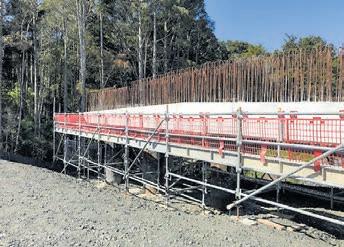
hit the stage at 8pm. The official grand opening is on Saturday, November 4
“There has been a massive effort from everybody. Steve Palmer and Gordan Dallish have been there every single day with us to make it work. Yvonne was instrumental and did the signage and

computer work. I often wake up in the early morning, and she is still working — she is that dedicated.
“We have been sponsored by Lion Breweries, and we have many giveaways for both those evenings, and I hope the town enjoys it.” ¢

Wellsford Lions will be holding its annual Pink Ribbon Street Appeal on Friday,
outside the Wellsford Four Square.
“I have organised the Wellsford Pink Ribbon Street Appeal for eight years and have been part of the Wellsford Lions for 12 years,” says organiser Vanessa Corry. “I have been in the area for 20 years, and my husband Stephen was born and bred here. He is in Lions with me, too.”

“While my children were growing up, I focussed on being a school’s board of trustees and the Parent Teacher Association and what I could do for them.
“Once they left primary school, my next step was to be involved in the community. I am a doer and a leader,
so if there is anything that needs to be done in Lions, I like to be the chief and help organise. We have many awesome Lions members who help out on the day.
“I am a planner and a schemer, so leading the street appeal matches my personality.”
Vanessa said donation methods have evolved since she began, such as having text donations.
“We find that throughout our other appeals like Daffodil Day and
Blue September, Pink Ribbon is very successful and well-known. Everyone knows someone affected by cancer, and we get people who come up and tell us why they’re donating.
“It is touching. It is a greatly important cause. I love talking to people and hearing their stories because everyone has one.
“Look for us in pink, and we also put buckets around some of the local shops. I own a local coffee shop and
when people leave tips we donate them to the Pink Ribbon for that day.”
For more information about the Pink Ribbon appeal and events in your area, visit breastcancerfoundation.org.nz. People can express their interest in joining the Wellsford Lions through its Facebook page.
“The Lions is about community — that is what we do. Wellsford is a small town, and it is a great way for you to meet people.” ¢




































October is Breast Cancer Awareness Month across New Zealand; with a general election also scheduled for October 14, support for the doctors and nurses who identify and treat this condition is under the spotlight.


One of the core messages from the Breast Cancer Foundation of New Zealand (BCFNZ) is mammograms save lives. That is because early detection of breast cancer, as with all cancers, increases the ability of doctors to bring effective treatment to bear. If a cancer can be detected before it grows and spreads, the outlook is better now for the patient than ever. In fact, during the past 43 years, initiatives championed
by BCFNZ and medical advancements have seen breast cancer mortality drop by 43 per cent.





Hence, the current push by those fighting breast cancer to increase the age of those eligible for free screenings to 74. It’s a programme which would help all three of the BCFNZ’s core strategies — awareness, support and medical science.
“Raising the screening age to 74 is the one thing the government could do right now that would have the most impact on saving lives and cost less than $10 million a year,” said BCFNZ chief executive Ah-Leen Rayner.

“In the time since the promise was first made, we estimate that every month, one woman has needlessly lost her life because she couldn’t get the mammogram that would have made her breast cancer treatable.

“We’ve now had two different parliamentary committees recommend the government do it, we have crossparty support for the issue, we’ve had a health minister and health officials

accept the evidence that it would save lives, and yet we keep being told it’s not a priority.”
Making this one of the discussion points in the contentious area of health policy in the lead-up to a crucial election is just one way BCFNZ is advocating for cancer patients and their families. Around Northland and the rest of New
Zealand, this not-for-profit group offers support for those battling breast cancer and helps to fund research and keep this issue visible.




Please give generously this pink October, and show your support by wearing pink, talking to others about this issue, and letting your local candidate know it matters to you. ¢
More than 150 people gathered in Waipu recently for A Scottish Bonanza, a fundraiser concert for the Northland Caledonian Pipe Band, including three musically skilled youths.



“We played some snazzy jigs and hornpipes, which everyone enjoyed. Our last song was a non-traditional tune, a rendition of Sweet Caroline by Neil Diamond,” pipe band sergeant Sandy Geyer said.

“A friend gave us the arrangement because it is not written in the right key for the bagpipe, which only has a B-flat. We were the first New Zealand pipe band to perform it, and the crowd loved it.
Emer Lea, Hunter McInnes and Amelia Moon were some young performers who showcased their skills at the bonanza.
“Hunter turned 15 years old last month. He started learning the pipes
two and a half years ago and practices frequently. His Spanish teacher often asks him to stop playing music on his pencil because his practice chanter is always with him. I find out constantly that he has taken it to school. He loves piping, and being part of the band has been an amazing thing for him.
“When he started piping with Dereck Mackay, his Northland Caledonian tutor, his whole life changed for the better. He found his niche and gained confidence with friends and at school. On the night, Hunter performed a solo jig version of a reel called Mason’s Apron. It is a very complicated tune, and he did us
all proud on the night.” Sandy says Amelia became a vital band member at 12 years old as a tenor drummer and began competing with them in the last competitive season.
“Amelia started playing the tenor drum two years ago. At the concert, she played the bass drum for the tune Steam Train to Mallaig and made us proud. The song was played by six pipers. Two played firsts (the main melody), two played seconds (harmonies), and two played thirds (harmonies).
“It is an intricate tune where everyone at some point is playing something different, and a strong bass drum beat is

important to keep the band on track. At only 16 years old, vocalist Emer Lea has an international-class voice. She sang beautiful songs like The Bonnie Banks of Loch Lomond and Danny Boy. We also did a powerful performance of Amazing Grace, beginning with lone piper Bain McGregor. Emer came in to sing it, and all of the pipers came in together before the drummers joined.
“I am grateful that the community came out to support us. We got an encore, and we played the Flower of Scotland, and Waipu is very Scottish, so it was deeply meaningful for the community.” ¢
Jeanette Vickers can often be found with her camera in hand, photographing things of colour, creating images of beauty whilst exploring nature at its best.
“I grew up in the small township of Kirapahe, on the Hauraki Plains,” says Jeanette.
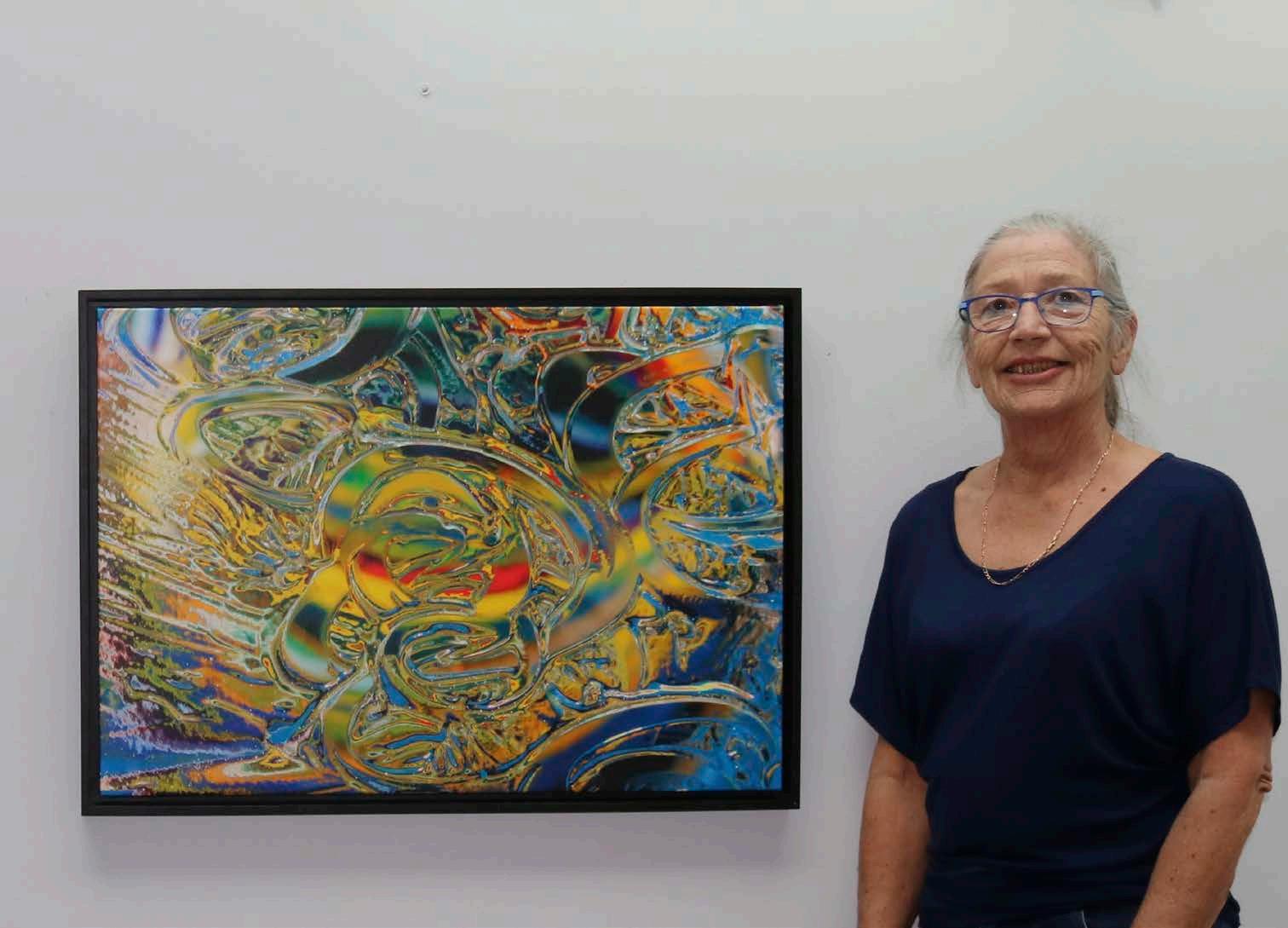
“We had land, horses and bicycles. We used to play cops and robbers on the horses and had lots of fun. It was quite a little township, and we could go anywhere back then.
“We had a picture theatre, supermarket, butcher, fish and chip shop, drapery and whiteware store because we had the huge dairy factory, which was the largest in our hemisphere.
“Even as a child, I had an interest in photography. I was given a box brownie camera when I was seven years old, and you’d have to wait two weeks for the photos to come back from being developed and then work out your mistakes.
“I moved to New Plymouth to do nursing when I was 16 years old and then got a really good Minolta camera, and enjoyed getting some really good photographs of various things and upskilling.
“After four years, I moved to work at the Tokoroa Hospital and thoroughly enjoyed it. Kinleith Forestry sponsored the hospital, and it was lovely.”
Jeanette then went on to Christchurch following her career path.
Auckland and reacquainted with Chris. We married in 1985 and are still loving life. Chris is a wonderful, wonderful husband — I couldn’t have done better.
“His family had a bach here in Mangawhai and had been coming for 10 years before buying it. He was around 15 years old when he first started to go to Mangawhai, and I came up for the first time in 1984.
“In Auckland, I went from training manager to personnel manager and then human resources for Goodman Fielder and Watties. Back then, I was one of two women at the level of management.
“I travelled all over the place in my 20s and had always wanted to live in Christchurch because of the daffodils and cherries I saw in photos. I initially met my husband Chris there.
“When I was 32 years old, I moved into corporate roles and relocated to
“The changes we have seen here in Mangawhai have been astronomical. I remember playing golf, and we’d stop and all wave at everyone driving past because we knew them all, you can’t do that now because it’s changed so much, and we don’t know everyone anymore.
“I believe the place grew because of the 18-hole golf course. I’d go back to work and they’d ask where Mangawhai was, then a lot of Aucklanders came up
““I travelled all over the place in my 20s and had always wanted to live in Christchurch”p From fungi to exploring the effects of water, light and colour on pāua, Jeanette has taken her photography to new and exciting genres
in wintertime and brought baches. Back then, we were the best-kept secret.
“We moved here in 2000 when I was diagnosed with lupus, and we needed to change our lifestyle as I couldn’t do the job anymore. Although I couldn’t walk properly, I started playing golf again. About a year later, the doctors put me on prednisone, and it made a huge difference to my mobility.
“The club was an amazing social scene back then. We had a wonderful time and could stay until 1am and walk home. It was so much fun playing pool with the jukebox going.
“I became a committee member of the Mangawhai Artists Group way back in the beginning. The only thing we had was our art trail — we didn’t have the gallery or anything like that.
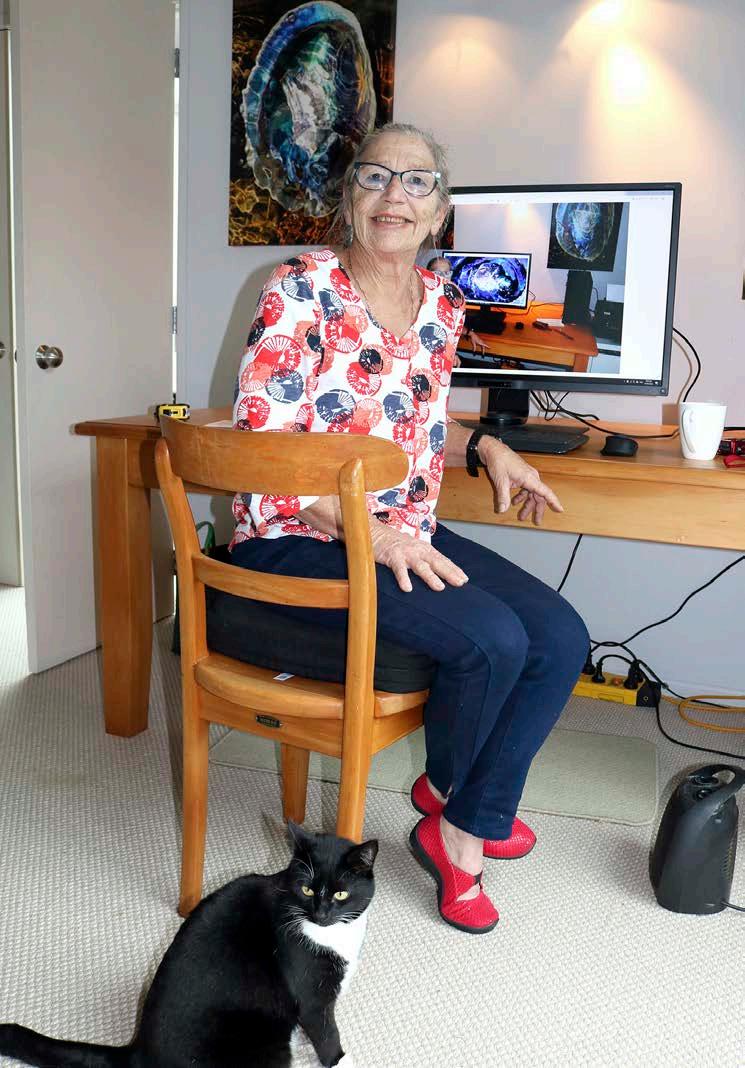

“I went into my very first exhibition at the golf club with my mushroom photos. It was a show and tell, really. I had found various mushrooms and fungi on the golf course and would photograph them. They were all sizes, from large
to tiny specs. Everyone I showed was impressed, so I went to Auckland and got about 120 framed in lots of three in each frame. Mushrooms are fascinating things. When you photograph in macro, you can look at tiny spaces and see tiny, tiny fungi. I have just bought a new book, and they say that mushrooms may save humanity because you can make lots of things from them, including polystyrene, and they are huge carbon take-ups.
“I also did my water photos, I was entering the art trail and showed my mushrooms for a couple of years and needed something else to show. One day, I was sitting on the seat next to the wharf looking at the water and noticed the ripples of water with colourful prisms on the sand underneath. I thought, wow, took a photo, not expecting much and it was beautiful.
“Then, I looked out the window at home and saw the same thing happening on the beach. I grabbed my camera and took some shots of the prisms over top of the water with the zoom with the little
waves, and they were lovely, so that became my next project.
“I would sit or lay over the rocks and then noticed underneath the rocks brought out various colours. Five years later, someone told me the colours were from the boats bringing in the kauri logs. I thought it was from people’s boundary fences or scoria giving me reds.
“I was told that when they came over the bar to pick up the kauri trees, they would have to put ballasts with rocks and things on the vessels to get over the bar and they’d throw the things off once they arrived.
“Our house is across from the bar, so they’re still coming up on my shoreline. I’d find things like pieces of spinifex with dried heads like a pincushion caught between the rocks and used them for images as well.
“Eventually, I found I had to buy a camera every two years because of the sand and salt, so I decided to stop and went back to macro photography of mushrooms and flowers.”
The other big part of Jeanette’s life was rescuing cats.
“I used to be called the mad cat lady. At the time, people were treating cats dreadfully. They’d bring their cats up with them and couldn’t find the cat when it was time to go home. Rather than looking for them, they’d just leave them here. I’d find them, get them spayed and neutered and rehome them.
“I had 14 at one stage. They were the oldies and the sickies that I couldn’t adopt out, or they were a bit wild to adopt. We are now down to five, and I love them to bits — it was a very worthwhile experience. Artwise, I’m currently working with large paua and they have gorgeous colours. I love my photography and intend to stick to it. My next project is still in its planning stages, but I’m excited to see the end result.
“Chris has been a wonderful support this whole time. I love him to bits — we’ve had many fun years together. We love living here in Mangawhai — it is certainly a beautiful place to live.” ¢
“I went into my very first exhibition at the golf club with my mushroom photos. It was a show and tell, really”p Jeanette Vickers enjoys spending time taking photos of colourful subjects p Once known as the mad cat lady, Jeanette used to rescue abandoned felines and rehome them or care for them herself

From the 18th century, since James Cook’s initial naming after catching more than 100 snapper, Bream Bay has been a drawcard for its deep water anchorage, white beaches and verdant lands.
Directly across from Marsden Point is the former Reotahi freezing works, which commenced operations in 1912. The brainchild of Alfred Bevans, the works became a significant exporter of frozen meat to Britain until 1921, when a large fire destroyed it. Bevan’s enterprise, later taken over by British-owned Vestey Brothers, pioneered the first use of the Bream Bay area as a deepwater port.
That potential was later seen with the building of the Marsden Point Refinery and Marsden A and B oil-fired power plants on land that had once been utilised by local iwi and settlers for various purposes.

By the 1960s, the government saw the need for an oil refinery to process crude oil rather than importing it. Construction was initiated in 1962 and completed by 1964. Reform and expansion in the 1980s saw the refinery site expand further.
With later privatisation, the refinery became uneconomic and was closed down recently. Its location was chosen for the direct access to deep water for the giant oil tankers bringing in crude oil from around the world.
Housing for the refinery and power station workers provided a lifestyle close to the beach. It changed the landscape into a village of families all enjoying life on the sands of Bream Bay. Recreational activities and the deep blue waters of the bay also drew in fishing enthusiasts from around the country.

Before the advent of the refinery, commercial fishing was already an established industry. In 1934, local longline fishermen approached the Whangārei Harbour Board to have fishing trawlers from Auckland banned from Bream Bay. They reasoned that the trawlers and seine netting threatened their livelihoods. While recommendations were made, the trawlers continued to come into the area. By 1948, the same issue remained. Again, complaints were forthcoming about seine trawlers cleaning out entire schools of fish, which had led to over-fishing and a sharp decline in stocks. A ban was again sought supported by the petitions of many fishermen in the region.
In the 1980s, two trawlers, Happy 1 and Happy 2, owned by the Hikurangi Fisheries Ltd, were spotted by a fisheries
patrol boat in a prohibited fishing zone near Marsden Point. The two vessels were chased by the Taupo and then boarded. The two skippers were both arrested and charged with illegal fishing. The trawlers had been plotted 22 nautical miles inside the protected
area, instigated at the request of the residents of Bream Bay to protect the fish stocks.
In more recent years, the great bay has become a drawcard for lifestyle, work and play and will continue to grow for decades to come. ¢



ATV SAFETY HELMETS — from $119 accessories from $15. The law has changed! Have you got yours?
Come & see us at Rouse Motorcycles, King Street, Hikurangi. Ph 0800 963 636. www.atvtyres.co.nz. Subject to availability..
NEW YAMAHA FARM ATVs — 5.9% interest & 3 year warranty. Only at Rouse Motorcycles, King Street, Hikurangi — phone 0800 963 636 & Yamaha MC Whangarei. Ph 09 438 0804
ATV MATS from $89 — Come in & see us at Rouse Motorcycles, King Street, Hikurangi. Ph 0800 963 636. www.atvtyres.co.nz.

TRADES & SERVICES

KNIFE & TOOL sharpening, rope splicing. Phone Steve 027 478 6545.

PLUMBER AVAILABLE for new builds. Contact James 021 0263 9558, Plumb Hub Northland Ltd. Servicing Hikurangi to Mangawhai.
WORK WANTED
24 HOUR EMERGENCY call-out plumbing service. Contact James 021 0263 9558, Plumb Hub Northland Ltd. Servicing Hikurangi to Mangawhai.
PROPERTY MAINTENANCE
PLUMBING UPGRADES & renovations. Contact James 021 0263 9558, Plumb Hub Northland Ltd. Servicing Hikurangi to Mangawhai. TANK SERVICES
NEW TANK installations. Contact James 021 0263 9558, Plumb Hub Northland Ltd. Servicing Hikurangi to Mangawhai.
35 Sequence (5)
36 Japanese leadglazed earthenware (4)
37 Northern China desert (4)
43 Started the batting (6)
44 Moves towards (5)
46 Paper quantity (4) 47 Alligator pear (7)
Covet (6)
Fill the grid so that every column, every row and every 3x3 box contains the digits 1 to 9.
ACROSS: 1 Diary, 4 In mint condition, 14 Erase, 15 Tokyo, 16 Statistics, 17 Gleam, 19 End, 20 Gateway, 21 Antenatal, 22 Soften, 25 Pay packet, 27 Jungle, 28 Youths, 33 Telescopes, 35 Ass, 36 Reagan, 37 Iron, 39 Toe, 41 Chablis, 42 Banzai, 43 Amendment, 44 Franc, 45 Anecdote, 50 By, 51 Infamous, 55 Barge, 58 Caretaker, 59 Adroit, 60 Florist, 61 Doc, 63 Duck, 64 Entire, 65 Hot, 66 Economical, 68 Eleven, 69 Placed, 71 Spaceship, 76 Duties, 77 Capacitor, 79 Pianist, 81 Rye, 84 Cairn, 85 Elliptical, 86 Ochre, 87 Leave, 88 Sow your wild oats, 89 Kenya. DOWN: 2 Isobar, 3 Rhyme, 5 Nets, 6 Intense, 7 Tasted, 8 Ouija, 9 Disdain, 10 Tags, 11 Oregon, 12 Haven, 13 Reddens, 14 Emotion, 18 Cappuccino, 23 Scope, 24 Almanac, 26 Acerbic, 27 Justify, 29 Torpedo, 30 Peahen, 31 Maize, 32 Tavern, 34 Seam, 36 Relax, 38 Notes, 40 Idea, 45 Arced, 46 Earache, 47 Data, 48 Taking, 49 Bride, 50 Beached, 52 Fellowship, 53 Martini, 54 Unseat, 55 Braille, 56 Wrath, 57 Vice, 62 Voice, 67 Lettuce, 68 Emerald, 70 Chateau, 72 Proviso, 73 Mexico, 74 Dispel, 75 Osprey, 76 Decay, 78 Aglow, 80 Niche, 82 Only, 83 Vast.
Insert the missing letters to complete ten words — five across the grid and five down. More than one solution may be possible.







